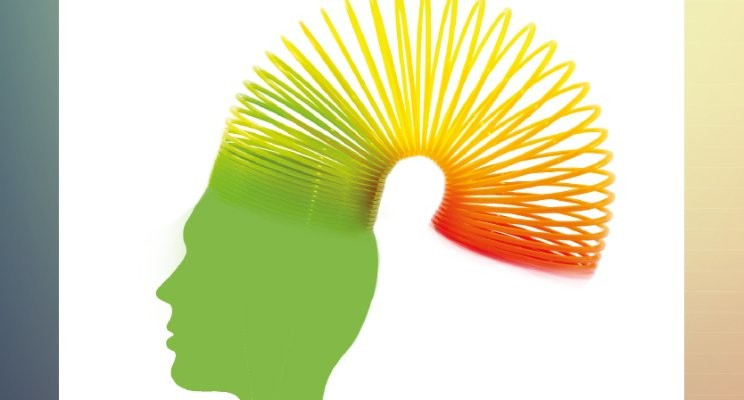Have you ever looked at a cloud or an abstract image and thought you saw something specific? Maybe a face, a dog, or even something like a fish or a plane? Recently, a viral image has people seeing either a fish or a plane, sparking conversations about brain dominance and perception. So, what does it mean if you see a fish versus a plane? Let’s explore this fascinating topic and uncover what, if anything, this exercise can reveal about our brains!
Left-Brain vs. Right-Brain: The Classic Debate

The concept of left-brain versus right-brain thinking has captivated popular psychology for decades. The idea suggests that each hemisphere of the brain controls different types of thinking and behavior. But what does it mean to be left-brained or right-brained?
The Left-Brain: Analytical and Logical
Traditionally, the left side of the brain is associated with logical, analytical, and detail-oriented thinking. If you tend to rely on facts, prefer structured routines, or excel at math and language, you might identify more with left-brain characteristics. When looking at the fish-or-plane image, left-brained thinkers might see the fish first due to its simplicity and order.
The Right-Brain: Creative and Intuitive
In contrast, the right hemisphere is linked to creativity, intuition, and holistic thinking. Right-brained individuals are often more imaginative, open to abstract ideas, and excel in fields like art and music. If you see a plane, it could suggest that you gravitate toward abstract and imaginative interpretations.
Is There Any Science Behind These Labels?
While the left-brain/right-brain theory has some roots in neuroscience, modern research has shown that the concept is oversimplified. Studies have found that both hemispheres work together, regardless of a person’s personality or cognitive style. However, the theory persists as a metaphor for explaining different ways of thinking.
The Fish or Plane Illusion: What Do You See?
So, let’s get back to the question: What do you see in the image—a fish or a plane? Take a moment to observe the image. Here’s what your perception might reveal:
If You See a Fish First
Seeing a fish could indicate a preference for simplicity and order. Fish are straightforward shapes, and recognizing them may align with an analytical, detail-focused thinking style. This perception might suggest a more structured approach to problem-solving and an inclination toward logic.
If You See a Plane First
On the other hand, spotting a plane may hint at a more abstract perspective. Seeing the plane requires some imagination, as planes don’t have as straightforward a shape as fish do. This perception might be associated with creative, big-picture thinking and a tendency to explore new ideas.
Can You See Both?
If you’re someone who can switch between seeing a fish and a plane, it could indicate cognitive flexibility and the ability to adapt your thinking style. People who can see both images may easily shift between analytical and creative approaches, making them well-rounded thinkers.
Exploring What Your Perception Says About You

While this simple visual exercise can’t definitively categorize you as left-brained or right-brained, it does offer some intriguing insights into your cognitive tendencies. Here’s what your perception might suggest about your personality and thinking style:
Seeing the Fish: The Analytical Thinker
If you see a fish, you might have an analytical mindset. Analytical thinkers are often detail-oriented, preferring facts and logic over abstraction. You may excel in structured environments, appreciate routines, and feel comfortable following a methodical approach.
- Tendencies: Detail-oriented, logical, and structured
- Strengths: You’re likely to excel in roles that require precision, like data analysis or project management. Your knack for organization allows you to stay focused and efficient.
Seeing the Plane: The Creative Thinker
Those who see the plane tend to think creatively. Recognizing the plane requires some abstract thinking, and creative thinkers are often comfortable exploring new concepts and big-picture ideas. You might thrive in environments where innovation and creativity are valued.
- Tendencies: Imaginative, intuitive, and open-minded
- Strengths: Your ability to think outside the box may make you well-suited for roles that require brainstorming and artistic expression. You enjoy exploring concepts and find inspiration in unusual places.
Seeing Both: The Balanced Mind

If you can see both images or switch between them, you may have a balanced approach to thinking. This flexibility allows you to adapt your cognitive style depending on the task at hand. Balanced thinkers often combine analytical and creative skills, giving them a well-rounded perspective.
- Tendencies: Adaptive, versatile, and balanced
- Strengths: You’re capable of integrating both logic and creativity, making you an effective problem solver. Your ability to adapt could make you well-suited for roles that require both technical skills and innovation.
Debunking the Left-Brain vs. Right-Brain Myth
It’s essential to note that the fish-or-plane illusion is simply a fun exercise and doesn’t determine your cognitive abilities. The idea of being either left-brained or right-brained is largely a myth. Neuroscience research shows that we use both sides of our brains for most tasks, regardless of whether we lean toward creativity or analytical thinking.
While you might show tendencies associated with certain traits, real-life cognitive processes are complex. Most people blend both logical and creative thinking in different situations, and no single image can fully capture the nuances of human perception.
Why We’re Drawn to Optical Illusions and Perception Tests

Visual illusions like the fish-or-plane puzzle captivate us because they reveal the fascinating ways our brains interpret the world. These puzzles remind us that reality isn’t always as it seems, and our perceptions are often influenced by our cognitive tendencies.
These exercises also spark curiosity and encourage us to think about how we process information. By exploring illusions, we become more aware of our unique ways of seeing the world and gain insight into the diversity of human perception. Plus, they’re a fun way to challenge ourselves and learn something new!
Final Thoughts: What Do You See?
So, do you see a fish, a plane, or maybe even something else entirely? Regardless of what you see, the fish-or-plane illusion is a delightful way to reflect on your thinking style and celebrate the uniqueness of human perception. Remember, while these exercises offer interesting insights, the human mind is far too complex to be fully understood through a single image.
The next time you encounter an optical illusion, take a moment to think about what your perception might reveal about you. And don’t forget, the most fascinating part of any illusion is the opportunity it provides to explore the amazing ways our brains work. So keep exploring, stay curious, and enjoy the journey of discovery.




